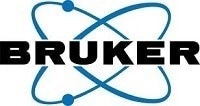Recent work has shown how nuclear magnetic resonance (NMR) spectroscopy can be applied for liquid product identification and quantification as part of an automated product analysis routine for recently developed nickel catalysts.1
How to most efficiently reduce carbon dioxide gas into useful chemical products is one of the biggest current questions in chemistry. While progress has been made in achieving electrochemical CO2 reduction, the question remains how to scale such processes to an industrial level while ensuring the process remains viable from a financial and sustainability perspective.2
Electrochemical CO2 reduction allows the transformation of CO2 into a useful chemical feedstock for the formation of other useful compounds, such as formic acid.3 As well as providing a non-petrochemical feedstock for chemical compounds, electroreduction provides a means of using CO2 waste as part of the circular economy.
When designing new catalysts and approaches to improving the electroreduction process, the challenge is understanding how certain environmental conditions, such as pH and electropotential, affect the electroreduction process and, ultimately, the nature and amount of the products formed.
The recently discovered class of nickel catalysts is particularly useful for the creation of longer carbon chains through electroreduction4 – one question remains, however: how can we successfully optimize and tune their performance, and what methods can be used to characterize them?

Image Credit: Mark William Penny/Shutterstock.com
NMR Methodology
NMR is a powerful spectroscopic tool for product and reactant identification, but there are a number of challenges for quantifying electroreduction reactions and their product distributions. Some include the formation of products, such as oxalate, which do not have any hydrogens to be detected in a proton NMR. Other products, such as formaldehyde, have a chemical shift, meaning their NMR signatures overlap with the very strong signal given by the solvent environment.1 The large number of products formed also means that a better resolution is needed for the spectrometer to prevent nearby chemical signatures from overlapping.
Recently, a team of researchers made use of a series of Bruker AVANCE HD Spectrometers, one with an 11.75 T magnet and frequency of 500 MHz and another with a 300 MHz. Both instruments were also equipped with Bruker CryoProbes. As the resolution of an NMR spectrometer is largely dictated by the magnet strength, using a more powerful machine made it possible for the team to identify a larger number of reaction products with greater confidence.
To overcome the poor contrast for certain products with the solvent background, the team used a pulse scheme called the WATERGATE method to help suppress the solvent signal.
Through the addition of relaxation agents, the team was also able to substantially reduce measurement times, making it possible to perform a complete characterization of all of the liquid products within 15 minutes. When it came to studying electroreduction methods, reducing the acquisition time was very important as many of the products being formed were at very low concentrations – on the micromolar level. Normally, longer acquisitions are used to compensate for low concentrations and, therefore, weak signal levels, but this can become problematic if the time for one relaxation process is too long.
The relaxation agents help to reduce the relaxation delays needed for full signal recovery before an additional scan can be performed. Bruker TopSpin software was used to capture all of the data before further processing and analysis, much of which was automated to help speed up product identification in the complex mixtures produced by the electrochemical reduction process.
Overall, the new methodology offers a very promising technique for the analysis of complex mixtures of low-concentration species with NMR and has helped discover some previously unknown reaction products from CO2 electroreduction with phosphate-derived nickel catalysts, such as ethylene and acetate. The team was also able to identify that lower overpotentials and near-neutral pH were conditions favorable for the formation of longer-chain species from the process.
References and Further Reading
- Preikschas, P., Martín, A. J., Yeo, B. S., & Pérez-ramírez, J. (2023). NMR-based quantification of liquid products in CO2 electroreduction on phosphate-derived nickel catalysts. Communications Chemistry, 6, 147. https://doi.org/10.1038/s42004-023-00948-9
- Lee, M., Park, K. T., Lee, W., Lim, H., Kwon, Y., Park, K. T., Lee, W., Lim, H., & Kwon, Y. (2020). Technology Current achievements and the future direction of electrochemical CO2 reduction : A short review. Critical Reviews in Environmental Science and Technology, 50(8), 769–815. https://doi.org/10.1080/10643389.2019.1631991
- Guo, W., Tan, X., Bi, J., Xu, L., Yang, D., Chen, C., Zhu, Q., Ma, J., Tayal, A., Ma, J., Huang, Y., Sun, X., Liu, S., & Han, B. (2021). Atomic Indium Catalysts for Switching CO2 Electroreduction Products from Formate to CO. Journal of the American Chemical Society, 143, 6877–6885. https://doi.org/10.1021/jacs.1c00151
- Zhou, Y., Martín, A. J., Dattila, F., Xi, S., López, N., Pérez-ramírez, J., & Yeo, B. S. (2022). Long-chain hydrocarbons by CO2 electroreduction using polarized nickel catalysts. Nature Catalysis, 5, 545–554. https://doi.org/10.1038/s41929-022-00803-5

This information has been sourced, reviewed and adapted from materials provided by Bruker BioSpin Group.
For more information on this source, please visit Bruker BioSpin Group.